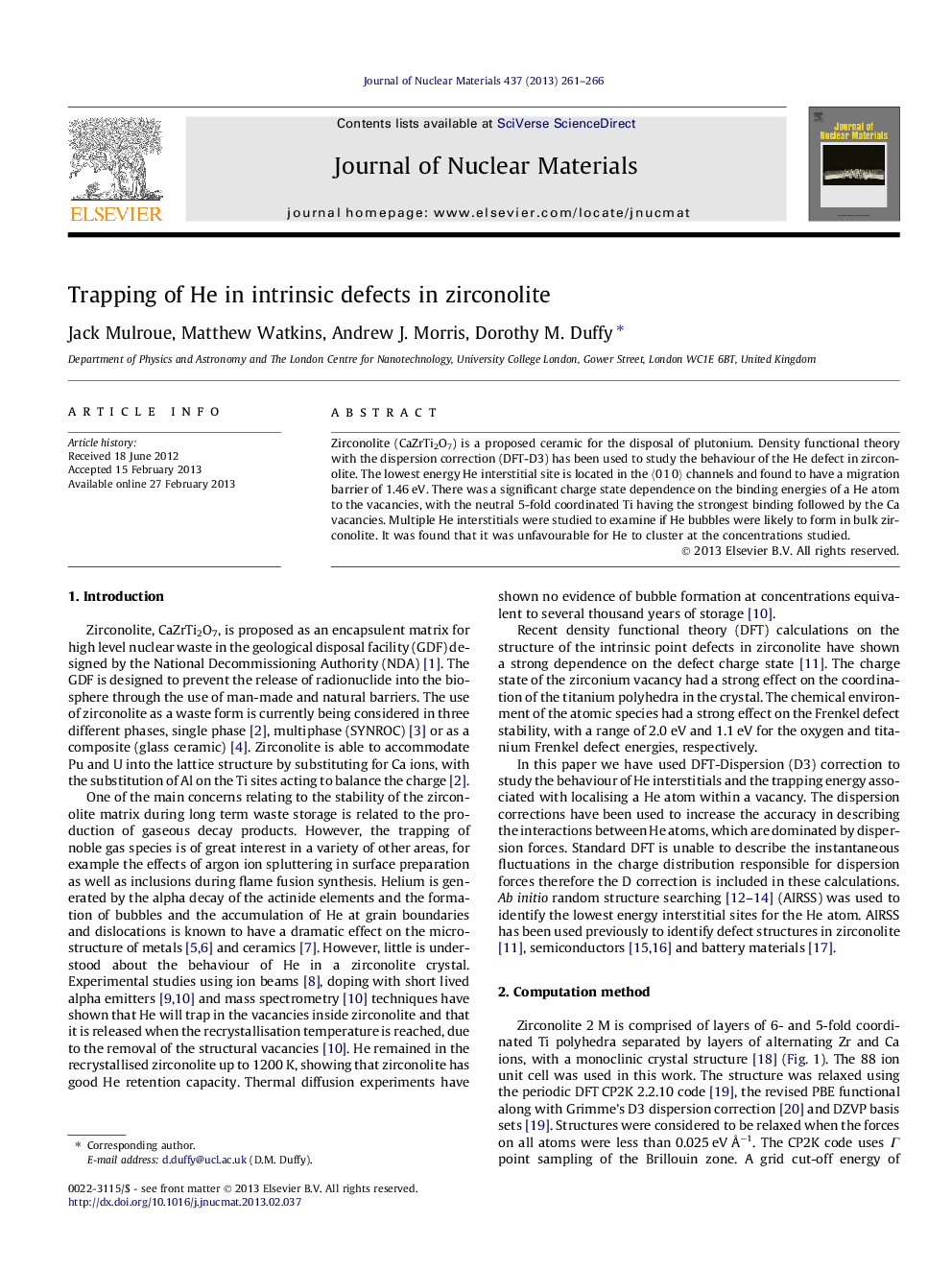| Article ID | Journal | Published Year | Pages | File Type |
|---|---|---|---|---|
| 1565797 | Journal of Nuclear Materials | 2013 | 6 Pages |
Abstract
Zirconolite (CaZrTi2O7) is a proposed ceramic for the disposal of plutonium. Density functional theory with the dispersion correction (DFT-D3) has been used to study the behaviour of the He defect in zirconolite. The lowest energy He interstitial site is located in the ã0Â 1Â 0ã channels and found to have a migration barrier of 1.46Â eV. There was a significant charge state dependence on the binding energies of a He atom to the vacancies, with the neutral 5-fold coordinated Ti having the strongest binding followed by the Ca vacancies. Multiple He interstitials were studied to examine if He bubbles were likely to form in bulk zirconolite. It was found that it was unfavourable for He to cluster at the concentrations studied.
Related Topics
Physical Sciences and Engineering
Energy
Nuclear Energy and Engineering
Authors
Jack Mulroue, Matthew Watkins, Andrew J. Morris, Dorothy M. Duffy,
